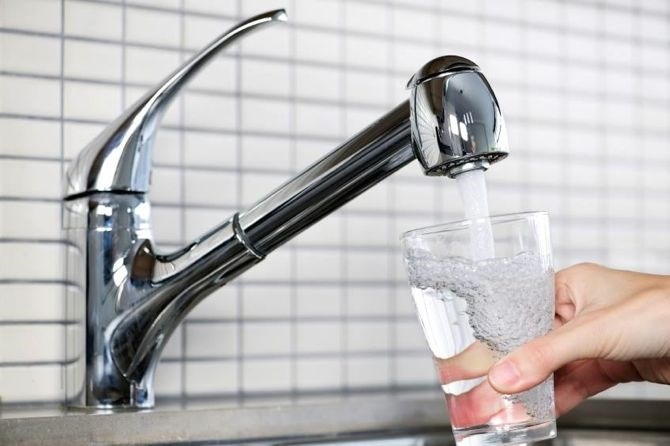Roughly 600 km of water pipes in Kamloops, Okanagan made with asbestos concrete
There are about 600 kilometres of asbestos concrete pipes carrying water to residents’ homes in four of the largest cities in the Thompson-Okanagan.
“There are no health concerns from Health Canada with regards to asbestos in the water,” Greg Wightman, utilities service manager with the City of Kamloops told iNFOnews.ca. “That definitely changes when it’s airborne so there’s a host of safe work procedures we need to follow when our workers are working with asbestos of any sort when it becomes airborne.”
Kamloops has about 175 kilometres of the asbestos cement pipe, around 29% of all its water mains.
“We take our direction from Health Canada and from the other regulatory bodies and there’s just no evidence from any of those bodies that asbestos in water is a concern,” Wightman added. “It’s so minimal a concern that we don’t even test for it here.”
In Kelowna and the Greater Vernon area, about 32% of the water lines are asbestos cement with 204 km in Vernon and 195 km in Kelowna. Penticton has 21 km of asbestos cement pipes, which works out to around 8% of the pipes in the water system.
“There's no consistent, convincing evidence that asbestos ingested through drinking water is harmful to your health,” Health Canada says on its website. “If you drink water containing asbestos fibres, you eliminate the fibres, mostly through feces. For this reason, Health Canada has not established drinking water guidelines for asbestos.”
The asbestos cement pipes came into use in the 1930s and were touted as being much more durable than other forms of pipes, like cast iron.
According to the Health Canada website, cities stopped installing them, mostly, in the 1970s. For the most part, cities use PVC plastic pipe these days but there are still plenty of cast iron, steel and asbestos concrete pipes buried under city streets.
Despite these safety assurances, warning flags have been raised in a recent CTV W5 investigation.
The investigation focused mainly on Regina, which has more than 500 km of asbestos cement pipes, many of which are now breaking. The city tests for asbestos but has never found any in its water system. The W5 crew found 370,000 asbestos fibres in one litre of water it sampled. Data from 100 communities across Canada and found 90% were still using asbestos concrete water pipes.
The W5 report also looked at Woodstock, New York, where pipes eroded in the 1980s, reportedly from acidic water, and released fibres into the drinking water. It got to the point where the water was ruled as unfit for consumption until the pipes were replaced.
READ MORE: Why homelessness will only get worse in the Okanagan, Kamloops
The Regional District of North Okanagan provided a similar response as the utilities service manager in Kamloops, saying airborne asbestos is of concern to workers.
The regional district also included this excerpt from the World Health Organization’s background document on the subject.
“Asbestos fibres are known human carcinogens by the inhalation route,” it reads. “Although, the data on adverse effects following ingestion are less clear, the overall weight of evidence from available epidemiology and animal studies does not suggest an increased risk of cancer following ingestion of asbestos in drinking-water.
“Epidemiological studies have evaluated the correlation between asbestos exposure via drinking-water and incidence of cancers of the stomach and gastrointestinal tract. The results are inconclusive, with some studies suggesting a weak positive correlation and others finding no evidence of a correlation.
“Based on the above, it is not considered appropriate or necessary to establish a guideline value for asbestos fibres in drinking-water.”
To contact a reporter for this story, email Rob Munro or call 250-808-0143 or email the editor. You can also submit photos, videos or news tips to the newsroom and be entered to win a monthly prize draw.
We welcome your comments and opinions on our stories but play nice. We won't censor or delete comments unless they contain off-topic statements or links, unnecessary vulgarity, false facts, spam or obviously fake profiles. If you have any concerns about what you see in comments, email the editor in the link above.




